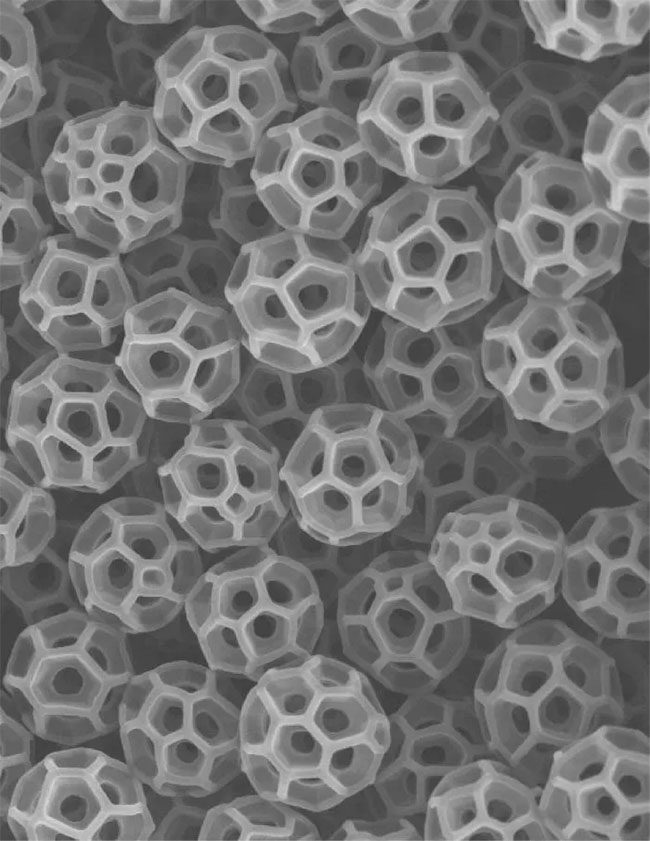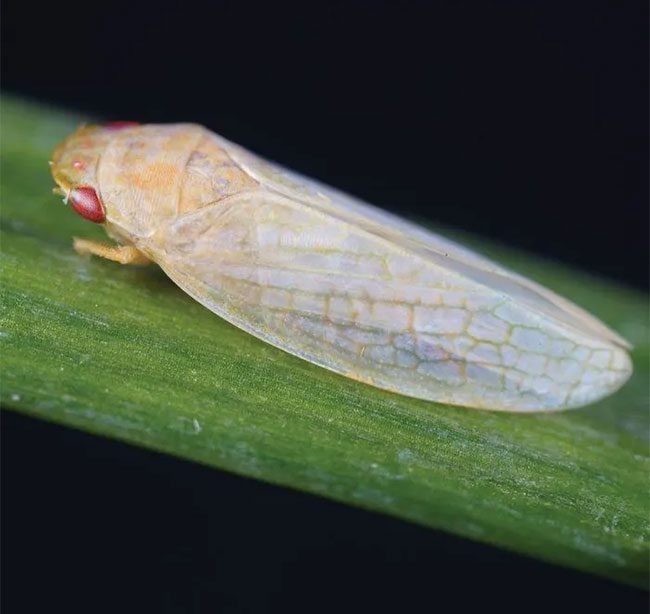The sharpshooter – a common leaf-eating insect that secretes tiny particles known as brochosomes, may inspire scientists to develop cloaking technology.
Decoding Brochosomes

Brochosomes produced by sharpshooters.
These small, unique particles have an unusual soccer ball shape with hollow cavities. Their exact function for the sharpshooters has been a mystery since the 1950s.
By 2017, Tak-Sing Wong, a professor of mechanical engineering and biomedical engineering at Pennsylvania State University, led the first research team to create a basic synthetic version of brochosomes to better understand their functions.
Lin Wang, a postdoctoral scholar in mechanical engineering and the lead author of the study, noted that this discovery could be very useful for technological innovation. With a new strategy to manipulate light reflection on surfaces, it might be possible to conceal human or machine thermal signatures. One day, humans may develop thermal cloaks based on the tricks used by sharpshooters.
“Our work shows how understanding nature can help us develop modern technologies,” said Lin Wang, explaining that although scientists have known about brochosomes for three-quarters of a century, replicating them in the lab has remained a challenge due to the complexity of their shapes.
According to Lin Wang, it is still unclear why sharpshooters produce such complex structured particles. Researchers created these brochosomes using advanced 3D printing technology in the laboratory.
They found that these particles can reduce light reflection by up to 94%. This is a significant discovery, as it is the first time we see nature manipulating light in its own way.
Several hypotheses have been proposed regarding why sharpshooters don a brochosome armor, ranging from preventing contamination and water absorption to creating a cloaking layer. However, the geometric knowledge of brochosomes suggests that their primary purpose may be to evade predators, according to Professor Tak-Sing Wong.
Additionally, the size of the holes in the brochosomes contributes to their hollow, soccer ball-like shape, which is critical. Notably, this size consistency applies across all sharpshooter species. Brochosomes have a diameter of about 600 nanometers, roughly half the size of a bacterium, with holes measuring approximately 200 nanometers in diameter.
“This raises the question, why do they have the same size? What is the secret to having brochosomes that are about 600 nanometers in size with holes around 200 nanometers? Does it serve a specific purpose?”, Wong said.

Sharpshooters produce brochosomes to coat their body surfaces.
Great Technological Prospects
Researchers found that the unique design of brochosomes serves a dual purpose. They absorb ultraviolet (UV) rays, reducing visibility for predators that can see UV light (such as birds and reptiles), while also scattering light, creating a reflective shield against potential threats. The size of the holes is perfect for absorbing light at ultraviolet frequencies.
This has the potential to yield numerous applications for humans using synthetic brochosomes. These include enhancing solar energy harvesting systems and developing advanced sunscreen to better protect skin from harmful sunlight. Researchers are also considering developing cloaking garments or camouflage devices directly inspired by sharpshooters.
To test these ideas, the team first faced the significant challenge of creating synthetic brochosomes. In the 2017 study, scientists simulated some characteristics of brochosomes, particularly the holes and their distribution, using synthetic materials. However, they could only create something resembling brochosomes rather than an exact replica.
“This is the first time we could create the exact shape of natural brochosomes,” Professor Wong stated, explaining that researchers could produce synthetic replicas proportionate to the structure of brochosomes using advanced 3D printing technology.
The researchers created a miniature version equivalent to 1/5 the diameter of a human hair, accurately recreating the shape and morphology, as well as the number and position of the holes.
Although these synthetic brochosomes are small, they are large enough to describe optical characteristics. The research team now aims to improve the production process of synthetic brochosomes in hopes of getting closer to their actual size.
Professor Wang noted that their work on brochosomes demonstrates the value of biomimetic research methods, where scientists look to nature for inspiration. He believes nature is a great teacher for scientists developing advanced new materials.
Researcher Lin Wang stated: “We have only focused on one insect species, but there are many more fascinating insect species waiting for materials scientists to study. They can help us solve various engineering problems. They are not just insects but also sources of inspiration.”


















































